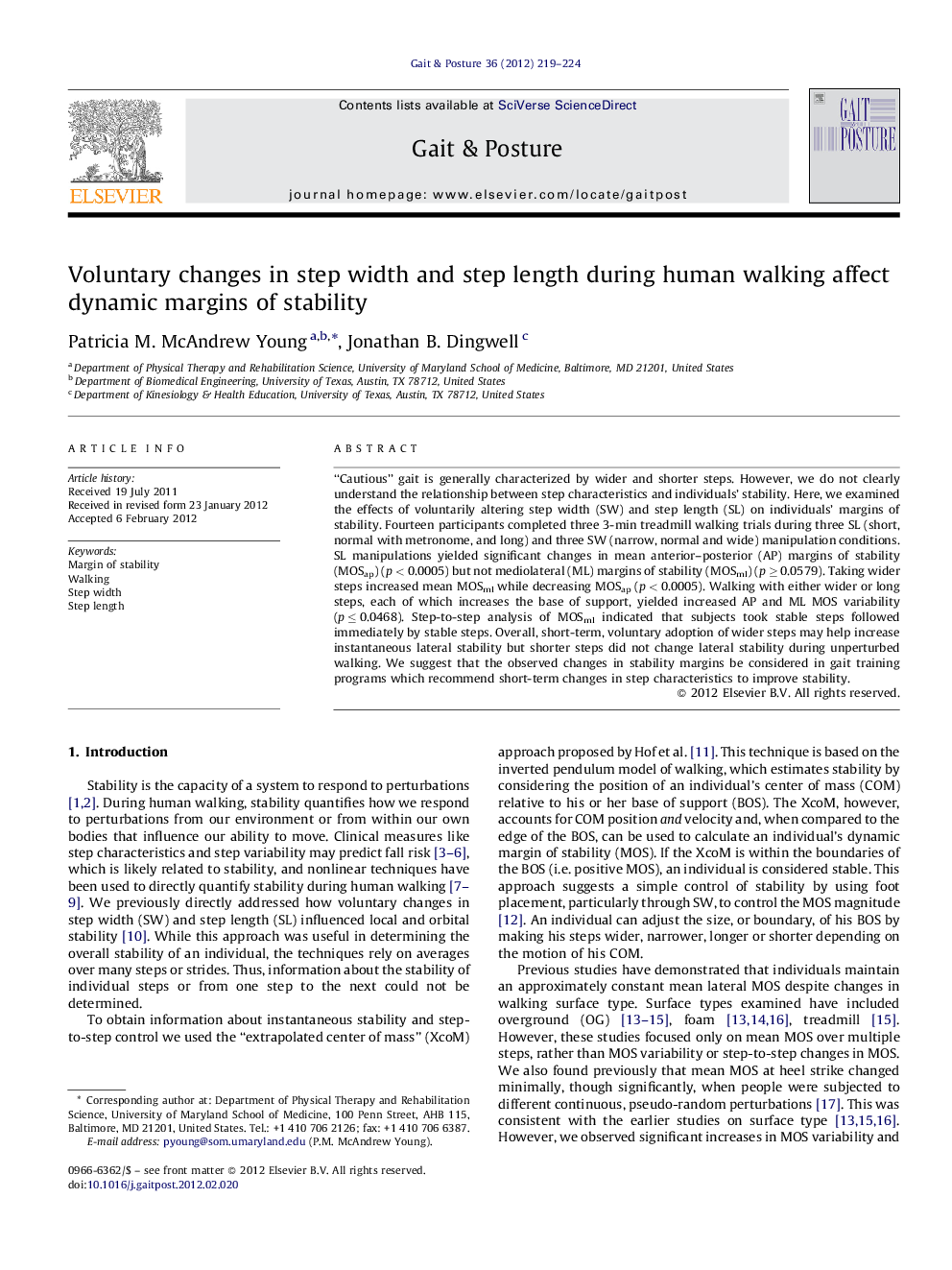| Article ID | Journal | Published Year | Pages | File Type |
|---|---|---|---|---|
| 6208051 | Gait & Posture | 2012 | 6 Pages |
“Cautious” gait is generally characterized by wider and shorter steps. However, we do not clearly understand the relationship between step characteristics and individuals' stability. Here, we examined the effects of voluntarily altering step width (SW) and step length (SL) on individuals' margins of stability. Fourteen participants completed three 3-min treadmill walking trials during three SL (short, normal with metronome, and long) and three SW (narrow, normal and wide) manipulation conditions. SL manipulations yielded significant changes in mean anterior-posterior (AP) margins of stability (MOSap) (p < 0.0005) but not mediolateral (ML) margins of stability (MOSml) (p â¥Â 0.0579). Taking wider steps increased mean MOSml while decreasing MOSap (p < 0.0005). Walking with either wider or long steps, each of which increases the base of support, yielded increased AP and ML MOS variability (p â¤Â 0.0468). Step-to-step analysis of MOSml indicated that subjects took stable steps followed immediately by stable steps. Overall, short-term, voluntary adoption of wider steps may help increase instantaneous lateral stability but shorter steps did not change lateral stability during unperturbed walking. We suggest that the observed changes in stability margins be considered in gait training programs which recommend short-term changes in step characteristics to improve stability.
⺠We quantify how step characteristics influence margins of stability during walking. ⺠Step length manipulations affect anterior but not lateral stability margins. ⺠Walking with wider or longer steps increased margin of stability variability. ⺠Short-term adoption of wider steps may increase instantaneous lateral stability.
